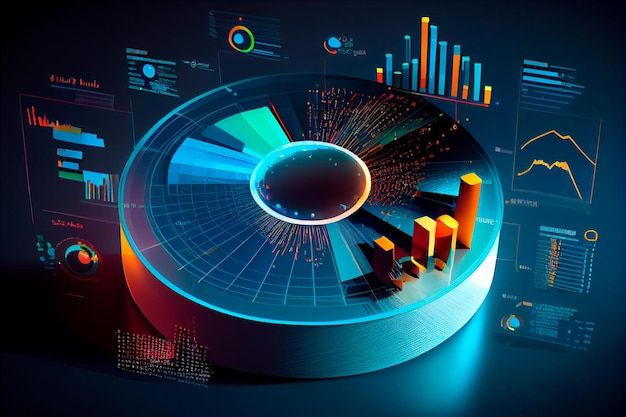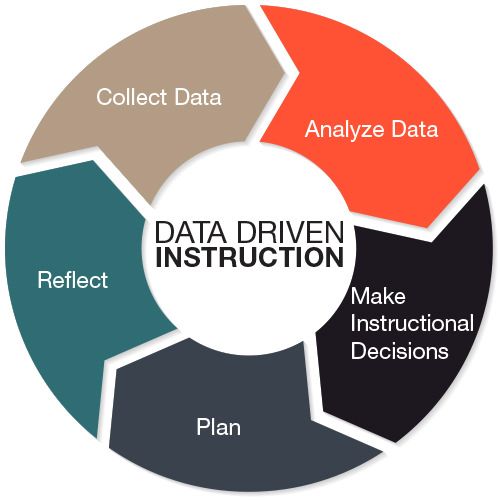In today’s interconnected world, an invisible, omnipresent force is quietly revolutionizing every facet of human endeavor: data. From the smallest personal habit to the grandest global market trend, information is being generated at an unprecedented rate. Yet, raw data alone holds little value. Its true power is unleashed only when transformed into actionable insights – a process that involves collecting, cleaning, analyzing, and interpreting vast datasets to reveal patterns, predict outcomes, and guide decision-making. These insights are the fuel of modern progress, propelling innovation, optimizing operations, and fundamentally shaping strategy across industries. Understanding how data insights drive progress isn’t just about technology; it’s about discerning the very engine of contemporary advancement, ensuring smarter choices and more impactful outcomes across all sectors.
The Evolution of Decision Making: From Gut Feel to Data Science
To fully grasp the critical role of data insights today, it’s essential to trace the historical progression of decision-making, understanding how we’ve moved from intuition-driven choices to highly sophisticated, data-backed strategies.
A. The Era of Intuition and Experience
For most of human history, decisions, whether in business, governance, or daily life, were primarily based on intuition, experience, and anecdotal evidence.
- Trial and Error: Early decision-making often involved experimenting, learning from mistakes, and incrementally improving processes. This was a slow and often costly method of acquiring knowledge.
- Expert Authority: Knowledge and wisdom were typically concentrated in experienced individuals or elders whose decisions were respected due to their past successes and deep domain knowledge. This reliance on individual expertise limited scalability and introduced subjective biases.
- Limited Data Collection: Information was scarce, often anecdotal, and difficult to collect or share broadly. Record-keeping was rudimentary, making it challenging to identify long-term patterns or causal relationships.
- Slow Feedback Loops: The time between taking an action and observing its consequences was often long, making it difficult to rapidly adapt strategies based on results. This hindered agile responses to changing conditions.
B. The Dawn of Early Data Collection and Statistics
The advent of formalized data collection and statistical methods marked the first significant step towards evidence-based decision-making.
- Censuses and Surveys: Governments began conducting censuses to understand populations, and early surveys collected limited demographic or economic data. These provided snapshots of populations but lacked dynamic insights.
- Basic Business Accounting: Businesses started keeping ledgers and basic accounting records to track revenue, expenses, and inventory. This provided a foundational financial overview but offered limited operational intelligence.
- Descriptive Statistics: Tools like averages, percentages, and frequency distributions allowed for basic summarization of data, providing descriptive insights into past events but less about future trends or causation.
- Limited Computational Power: Data analysis was largely manual or relied on simple calculators, limiting the scale and complexity of the insights that could be extracted.
C. The Digital Revolution and Big Data’s Emergence
The explosion of digital technology in the late 20th and early 21st centuries fundamentally transformed the scale and nature of data.
- Ubiquitous Data Generation: The internet, personal computers, mobile devices, and later, the Internet of Things (IoT), led to an unprecedented deluge of data from every conceivable interaction. Every click, purchase, search, and sensor reading became a data point.
- Data Storage Capabilities: Advances in storage technologies (hard drives, cloud storage) made it feasible to store truly massive datasets, often referred to as “Big Data,” characterized by its Volume, Velocity, and Variety.
- Computational Power: The exponential growth in processing power (Moore’s Law) and the advent of distributed computing (e.g., Hadoop, Spark) made it possible to process and analyze these enormous datasets.
- Early Business Intelligence (BI): Tools emerged to help businesses analyze their operational data, creating reports and dashboards that provided historical insights into performance, but often in a retrospective manner.
D. The Era of Data Science and Advanced Analytics
Today, we are in the era of data science, where sophisticated techniques transform raw data into predictive and prescriptive insights.
- Machine Learning (ML): Algorithms that learn patterns from data without explicit programming, enabling predictive capabilities (e.g., forecasting sales, predicting customer churn, identifying fraudulent transactions).
- Artificial Intelligence (AI): Broader AI techniques allow for highly complex pattern recognition, natural language processing, and advanced decision support systems that can operate autonomously based on data insights.
- Real-time Analytics: The ability to process and analyze data streams as they are generated, enabling immediate decision-making and automated responses (e.g., real-time fraud detection, dynamic pricing).
- Prescriptive Analytics: Moving beyond just predicting what will happen to recommending what should be done to achieve an optimal outcome (e.g., suggesting the best maintenance schedule, optimizing a supply chain route).
This journey highlights a continuous push towards more informed, proactive, and precise decision-making, where data insights are not just supplementary information but the very foundation upon which progress is built.
Core Pillars of Data-Driven Progress
The process of extracting valuable insights from data relies on several fundamental pillars that support the entire data lifecycle, from collection to actionable intelligence.
A. Data Collection and Ingestion
The journey begins with efficiently and reliably collecting data from diverse sources.
- Sensor Data (IoT): From industrial machinery, smart homes, wearables, and environmental monitors, providing real-time physical world data.
- Transactional Data: Records of purchases, financial transactions, logins, and customer interactions from databases and enterprise systems (ERP, CRM).
- Web and Mobile Analytics: Data on user behavior, clicks, page views, and app usage from websites and mobile applications.
- Social Media Data: Posts, comments, likes, and trends from social platforms, offering insights into public sentiment and trends.
- External Data Sources: Third-party datasets, public records, weather data, demographic information, and market research that can enrich internal data.
- Data Pipelines: Robust systems (ETL/ELT tools, streaming platforms like Kafka/Kinesis) for efficiently ingesting, transforming, and loading data from these myriad sources into storage.
B. Data Storage and Management
Once collected, data needs to be stored and managed effectively to be accessible for analysis.
- Data Warehouses: Optimized for analytical queries, consolidating data from various operational systems into a structured format for reporting and business intelligence.
- Data Lakes: Store vast amounts of raw, unstructured, and semi-structured data in its native format, providing flexibility for future analysis and machine learning workloads.
- Cloud Storage: Scalable, cost-effective, and highly available cloud-based storage solutions (e.g., AWS S3, Azure Blob Storage, Google Cloud Storage) are foundational for managing Big Data.
- Database Management Systems (DBMS): Relational (SQL) and Non-relational (NoSQL) databases for storing and organizing structured and unstructured data, each suited for different access patterns.
- Data Governance: Policies and procedures for ensuring data quality, security, privacy, compliance, and lifecycle management. This includes data lineage, metadata management, and access controls.
C. Data Processing and Analytics
This is where raw data is transformed into meaningful insights, using a variety of analytical techniques.
- Descriptive Analytics: What happened? (e.g., sales reports, key performance indicator dashboards, historical trends). This provides a historical view of performance.
- Diagnostic Analytics: Why did it happen? (e.g., root cause analysis, drill-downs into data anomalies, correlation studies). This helps understand the underlying reasons for observed phenomena.
- Predictive Analytics: What will happen? (e.g., sales forecasts, customer churn prediction, predictive maintenance, risk assessment). This uses historical data and statistical/ML models to forecast future outcomes.
- Prescriptive Analytics: What should I do? (e.g., recommending optimal actions, resource allocation, personalized offers, supply chain optimization). This is the highest level of analytics, providing actionable guidance.
- Machine Learning Algorithms: Supervised learning (regression, classification), unsupervised learning (clustering, dimensionality reduction), and reinforcement learning (for decision-making in dynamic environments) are core to advanced analytics.
- Data Visualization: Tools and techniques (e.g., dashboards, charts, graphs) for presenting complex data insights in an easily understandable and actionable visual format.
D. Action and Feedback Loops
Insights are only valuable if they lead to action and foster continuous improvement.
- Decision Support Systems: Tools that provide data-driven recommendations to human decision-makers, augmenting their judgment.
- Automated Actions: In some cases, insights can trigger automated responses (e.g., adjusting machine parameters, sending personalized notifications, dynamically repricing products).
- Continuous Monitoring: Tracking the impact of implemented actions and feeding new data back into the system, enabling continuous learning and refinement of models and strategies. This establishes a virtuous cycle of improvement.
- Stakeholder Collaboration: Ensuring that insights are effectively communicated to and understood by business leaders, operational teams, and end-users, fostering a data-driven culture.
How Data Insights Drive Progress Across Industries
The pervasive influence of data insights is evident across virtually every sector, fundamentally reshaping business models, operational strategies, and competitive landscapes.
A. Revolutionizing Business and Commerce
Data insights are the competitive differentiator in modern business.
- Personalized Customer Experiences: Analyzing customer data (purchase history, Browse behavior, demographics) enables businesses to offer highly personalized product recommendations, marketing messages, and customer service, increasing engagement and loyalty.
- Optimized Marketing and Sales: Data-driven insights help identify target audiences, optimize ad spend, predict sales trends, and refine pricing strategies, leading to higher conversion rates and revenue.
- Supply Chain Efficiency: Analyzing supply chain data (inventory levels, logistics, demand forecasts) helps optimize routing, reduce waste, predict disruptions, and improve delivery times, enhancing resilience and reducing costs.
- Fraud Detection and Risk Management: Machine learning models analyze transactional data in real-time to detect anomalous patterns indicative of fraud, significantly reducing financial losses and improving security in banking and e-commerce.
- Product Development and Innovation: Insights from customer feedback, usage patterns, and market trends guide the development of new products and features, ensuring they meet actual user needs and market demand.
B. Transforming Healthcare and Life Sciences
Data insights are at the forefront of medical breakthroughs and improved patient care.
- Precision Medicine: Analyzing patient genomic data, medical history, and lifestyle factors to tailor treatments and predict disease susceptibility with unprecedented accuracy.
- Drug Discovery and Development: AI analyzes vast biomedical datasets to identify potential drug candidates, simulate molecular interactions, and accelerate clinical trials, dramatically reducing the time and cost of bringing new medications to market.
- Disease Outbreak Prediction: Analyzing public health data, social media trends, and environmental factors to predict and track the spread of infectious diseases, enabling proactive public health interventions.
- Operational Efficiency in Hospitals: Optimizing hospital resource allocation (beds, staff, equipment), patient flow, and appointment scheduling using data insights, leading to improved patient experience and reduced costs.
C. Advancing Manufacturing and Industry
The industrial sector is leveraging data insights for operational excellence.
- Predictive Maintenance: Sensors on industrial machinery generate data that, when analyzed, can predict equipment failure before it occurs, allowing for just-in-time maintenance, minimizing costly unplanned downtime, and extending asset lifespan.
- Quality Control and Defect Reduction: Real-time data from production lines helps identify anomalies and predict potential defects, enabling immediate adjustments to manufacturing processes and significantly reducing waste.
- Optimized Production: Analyzing demand forecasts, supply chain data, and machine performance enables manufacturers to optimize production schedules, material usage, and energy consumption, leading to higher throughput and lower costs.
- Digital Twins: Creating virtual replicas of physical assets that receive real-time data, allowing for continuous monitoring, simulation of ‘what-if’ scenarios, and proactive optimization of complex industrial systems.
D. Enhancing Governance and Smart Cities
Governments and urban planners are using data to build more efficient, sustainable, and livable cities.
- Smart Traffic Management: Analyzing real-time traffic data, public transport usage, and weather patterns to optimize traffic light timings, reduce congestion, and improve urban mobility.
- Public Safety and Crime Prediction: Analyzing historical crime data, demographic information, and social indicators to predict high-risk areas, enabling more effective resource allocation for law enforcement.
- Urban Planning and Resource Allocation: Data insights inform decisions on infrastructure development, public service provision (e.g., waste management, utilities), and resource allocation to meet citizen needs efficiently.
- Environmental Monitoring: Analyzing sensor data on air quality, water quality, and noise levels to identify pollution sources, monitor environmental health, and inform policy decisions for sustainability.
E. Redefining Education and Research
Data insights are transforming learning and accelerating scientific discovery.
- Personalized Learning Paths: Educational platforms analyze student performance, learning styles, and progress to create customized curricula and provide targeted interventions, optimizing learning outcomes.
- Curriculum Development: Data on student engagement, learning effectiveness, and career outcomes informs the design and refinement of educational programs to better prepare students for future roles.
- Scientific Discovery: Researchers use advanced data analytics and AI to process vast experimental datasets, identify novel correlations, and accelerate breakthroughs in fields like physics, biology, and materials science, compressing years of research into months.
- Resource Allocation in Institutions: Universities use data to optimize campus resources, student support services, and facility management, improving the overall educational environment.
Challenges and Considerations in Leveraging Data Insights
While the promise of data insights is immense, organizations face significant challenges in effectively collecting, analyzing, and acting upon data.
A. Data Quality and Integrity
The adage “garbage in, garbage out” is profoundly true for data insights. Poor data quality (inaccuracies, inconsistencies, incompleteness, duplication) can lead to flawed analyses and erroneous decisions. Ensuring data integrity requires robust data governance, cleansing processes, and validation at every stage of the data pipeline.
B. Data Privacy and Security
Collecting and processing vast amounts of data, especially personal or sensitive information, raises critical privacy concerns. Organizations must navigate complex regulations (e.g., GDPR, CCPA, HIPAA) and ethical considerations. Ensuring robust data security against breaches, unauthorized access, and cyber threats is paramount, as a single incident can erode trust and incur massive penalties.
C. Talent Gap and Skill Shortages
The demand for skilled data professionals—data scientists, data engineers, machine learning engineers, and data ethicists—far outstrips supply. This talent gap makes it challenging for organizations to build and maintain the sophisticated data infrastructure and analytical capabilities needed to extract deep insights.
D. Data Silos and Integration Complexity
In many organizations, data resides in disparate systems and departments, creating data silos that hinder a holistic view. Integrating these diverse datasets, often from legacy systems, into a unified platform for analysis is a significant technical challenge, requiring complex ETL processes and robust data architecture.
E. Ethical AI and Algorithmic Bias
As AI and ML become central to generating insights, ethical considerations become critical. AI models can inadvertently perpetuate or amplify biases present in the training data, leading to discriminatory or unfair outcomes (e.g., in loan applications, hiring, or criminal justice). Ensuring fairness, transparency, and accountability in AI-driven insights is a complex ongoing challenge.
F. Cost of Infrastructure and Tools
Building and maintaining a robust data analytics infrastructure, including cloud resources, specialized databases, analytical tools, and AI platforms, can involve substantial costs. For smaller organizations, the initial investment and ongoing operational expenses can be prohibitive, despite the long-term benefits.
G. Organizational Culture and Change Management
Becoming truly data-driven requires more than just technology; it demands a fundamental shift in organizational culture. Resistance to change, skepticism about data, lack of data literacy among decision-makers, and a preference for traditional intuition-based approaches can hinder the adoption and effective use of data insights. Effective change management and leadership buy-in are crucial.
H. Real-time Processing and Latency
For critical applications like fraud detection or autonomous vehicles, insights must be generated and acted upon in real-time, often within milliseconds. Achieving ultra-low latency data processing and analysis at scale is a significant technical challenge, requiring specialized streaming architectures and edge computing capabilities.
Best Practices for Maximizing Data-Driven Progress
To effectively harness the power of data insights and drive tangible progress, organizations must adopt a strategic, holistic, and continuous approach, integrating best practices across the entire data lifecycle.
A. Define Clear Business Questions First
Before collecting any data or applying any analytics, start with clear business questions and objectives. What specific problems are you trying to solve? What decisions do you need to inform? What value do you seek to create? A problem-first approach ensures that data collection and analysis are purposeful and lead to actionable insights, preventing ‘analysis paralysis’ or data hoarding without clear intent.
B. Prioritize Data Governance and Quality
Establish robust data governance frameworks from the outset. This includes:
- Data Ownership: Clearly define who is responsible for specific datasets.
- Data Quality Standards: Implement processes for data validation, cleansing, and enrichment.
- Metadata Management: Document data lineage, definitions, and relationships.
- Security and Privacy Policies: Ensure compliance with regulations (e.g., GDPR, HIPAA) and internal security policies. High-quality, trusted data is the bedrock of reliable insights.
C. Build a Scalable and Flexible Data Architecture
Design a modern data architecture that can handle variety, volume, and velocity.
- Cloud-Native Approach: Leverage scalable cloud platforms (AWS, Azure, Google Cloud) for data storage (data lakes, data warehouses), processing, and analytics services.
- Modular and Extensible: Design components that are loosely coupled and can be easily updated or extended as new data sources or analytical needs emerge.
- Data Pipelines: Implement automated, robust, and fault-tolerant data ingestion and transformation pipelines.
- Real-time Capabilities: For time-sensitive insights, integrate streaming technologies and edge computing where appropriate.
D. Invest in Data Literacy Across the Organization
It’s not enough for only data scientists to understand data. Foster a culture of data literacy across all departments.
- Training Programs: Provide training on basic data concepts, analytical tools, and how to interpret data visualizations for non-technical employees.
- Self-Service BI: Empower business users with self-service Business Intelligence (BI) tools to explore data and create reports independently, reducing reliance on central data teams for routine requests.
- Data Storytelling: Encourage data professionals to translate complex analyses into compelling narratives that resonate with business stakeholders, focusing on actionable recommendations.
E. Develop a Robust MLOps/AI Governance Framework
For AI-driven insights, implement an MLOps (Machine Learning Operations) framework to manage the entire lifecycle of AI models, from development to deployment and monitoring.
- Model Versioning and Tracking: Ensure reproducibility and auditability of models.
- Continuous Monitoring: Track model performance in production, detect data drift or concept drift, and retrain models as needed.
- Bias Detection and Mitigation: Proactively identify and address potential biases in training data and model outputs.
- Explainable AI (XAI): Strive for transparency and explainability in AI decisions, especially in critical applications.
F. Prioritize Cybersecurity for Data Assets
Given the value and sensitivity of data, cybersecurity must be a top priority.
- Data Encryption: Encrypt data at rest and in transit.
- Access Controls: Implement granular Identity and Access Management (IAM) policies.
- Regular Audits: Conduct frequent security audits and vulnerability assessments.
- Threat Detection: Deploy advanced threat detection and incident response systems to protect data pipelines and storage.
G. Foster a Collaborative, Cross-Functional Culture
Break down data silos and encourage collaboration between data professionals, business units, IT, and operations.
- Cross-functional Teams: Create teams with diverse expertise that work together on data initiatives.
- Shared Goals: Align data strategy with overall business objectives, ensuring everyone understands the value of data-driven decision-making.
- Feedback Loops: Establish continuous feedback loops between insights generated and their impact on business outcomes, fostering a culture of continuous learning and optimization.
H. Start Small, Demonstrate Value, Then Scale
For complex data initiatives, begin with proof-of-concept projects that deliver demonstrable value quickly. Use these early successes to build momentum, secure further investment, and refine your approach before attempting to scale data-driven initiatives across the entire organization. This iterative model mitigates risk and ensures sustained progress.
The Future Trajectory of Data Insights
The evolution of data insights is far from complete. Several exciting trends are poised to deepen its impact and expand its reach, fundamentally redefining how we understand and interact with the world.
A. Hyper-Personalization and Predictive Experiences
The future will see data insights enabling hyper-personalized and truly predictive experiences across all interactions. AI will leverage individual-level data to anticipate needs, offer proactive solutions, and tailor environments, not just products (e.g., adaptive learning environments, proactive health interventions, personalized urban mobility).
B. Augmented Intelligence: Human-AI Collaboration
Rather than replacing human intelligence, data insights will increasingly enable augmented intelligence. AI will act as a powerful co-pilot, processing vast amounts of information, identifying patterns, and offering sophisticated insights and recommendations, allowing human decision-makers to focus on higher-level strategy, creativity, and empathy, making better, faster choices.
C. Real-Time, Event-Driven Analytics at Scale
The demand for immediacy will drive a greater emphasis on real-time, event-driven analytics at unprecedented scales. This means processing data as it’s generated, enabling instantaneous reactions and automated responses for critical applications (e.g., autonomous systems, real-time financial trading, smart infrastructure management). Edge computing will play a crucial role here.
D. Explainable AI (XAI) and Trust in Algorithms
As AI becomes more pervasive, the need for Explainable AI (XAI) will intensify. Future data insight platforms will focus on providing transparency into how AI models arrive at their conclusions, helping to build trust, identify biases, and ensure accountability, particularly in sensitive domains like finance, healthcare, and law.
E. Data Meshes and Decentralized Data Governance
The challenge of data silos within large organizations is leading to the concept of Data Meshes. This architectural paradigm advocates for decentralizing data ownership to domain-specific teams, treating data as a product. Future data insight ecosystems will embrace this distributed approach, facilitating easier data discovery, consumption, and governance across diverse organizational units, breaking down traditional data silos.
F. Ethical AI and Data Sovereignty
The ethical implications of data insights will drive stricter regulations and a greater focus on data sovereignty.
- AI Ethics Frameworks: Widespread adoption of ethical AI guidelines and legal frameworks to ensure fairness, privacy, and accountability in data-driven decisions.
- Data Sovereignty: Increased emphasis on ensuring data processing and storage adhere to local laws and national interests, impacting cross-border data flows and cloud deployments.
- Privacy-Enhancing Technologies: Greater use of technologies like homomorphic encryption and federated learning that allow insights to be derived from data without directly exposing sensitive information.
G. Graph Analytics and Connected Data
The growing complexity of relationships within data (e.g., social networks, supply chains, knowledge graphs) will drive the adoption of graph analytics. Future tools will excel at revealing insights from interconnected data, identifying hidden patterns, influences, and communities that are difficult to uncover with traditional relational databases.
Conclusion
In the contemporary landscape, where information is abundant but wisdom is scarce, data insights have emerged as the indispensable engine of progress. They transform raw, undifferentiated information into actionable intelligence, illuminating pathways for innovation, optimizing operations, and guiding strategic decision-making across every industry imaginable. From enabling hyper-personalized customer experiences to revolutionizing medical diagnostics and enhancing the efficiency of our cities, the pervasive influence of data is undeniable.
While the journey to fully leverage data insights is fraught with challenges—including data quality, privacy concerns, talent gaps, and organizational inertia—the benefits of embracing a data-driven approach are simply too profound to ignore. By investing in robust data infrastructure, fostering data literacy, prioritizing ethical AI, and cultivating a culture of continuous learning and collaboration, organizations can navigate these complexities. The future promises even more sophisticated, real-time, and explainable insights, further solidifying data’s role as the ultimate catalyst for human advancement, ensuring that progress isn’t just a hope, but a meticulously planned, data-driven reality.














